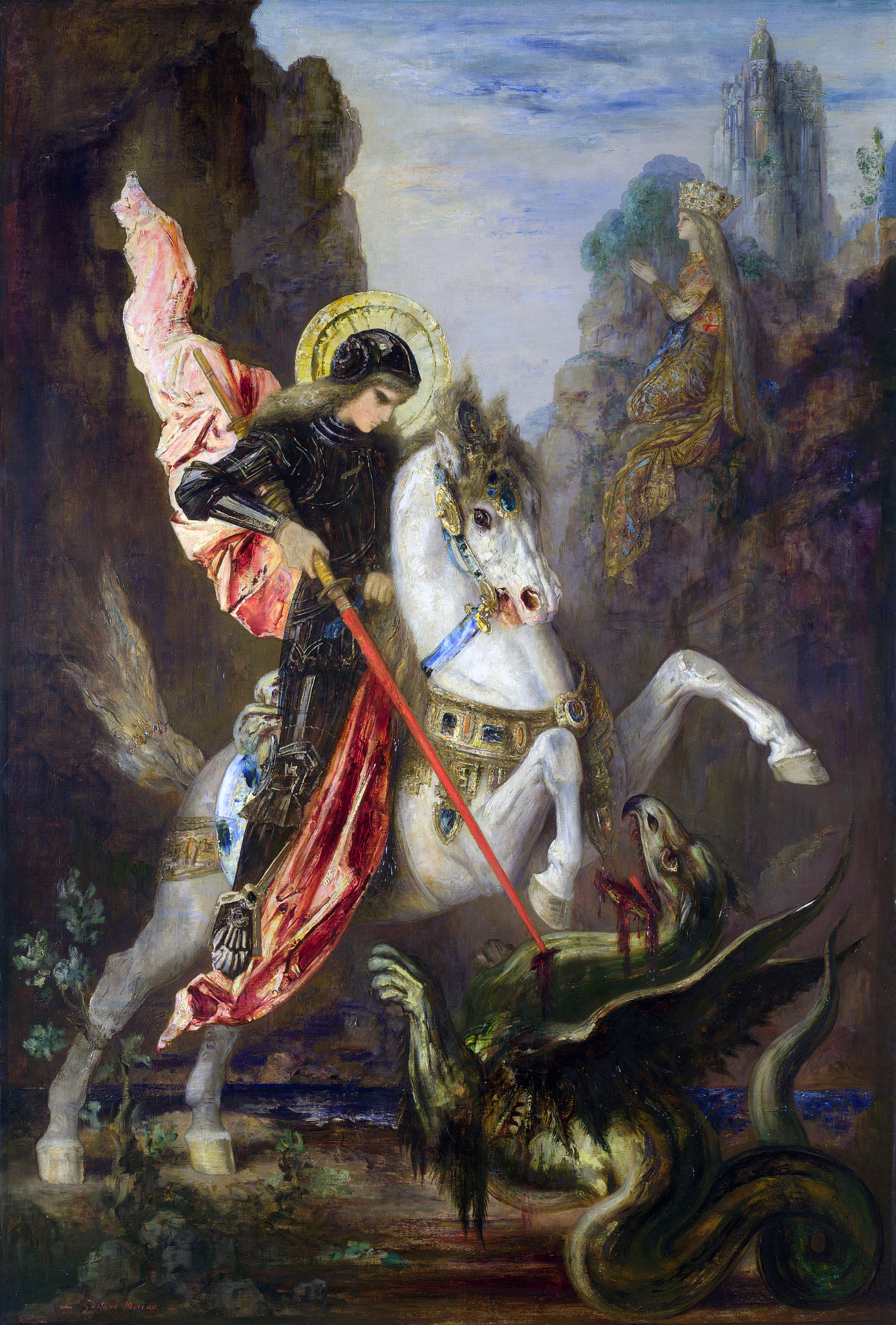
Since my research project earlier in the semester was based on Monsters in the Renaissance I wanted to continue on the idea of monsters. However, when I did my research the most common form of monster that I came upon was the “monstrous birth”, so I thought that I would choose something separate from monstrous births. I thought about it and decided to research the idea of dragons for they are most likely one of the most common modern day idea of a monster in the Renaissance.
While I was researching various dragon information I came upon how the dragon was used to symbolize sin or paganism in the early church. In The Christian Church during the Renaissance many paintings were made to emphasize this idea, paintings were created depicting church heroes having a dragon tamed, killed or defeated.
We saw a literary example of this in Edmund Spenser’s The Faerie Queene. The final battle of the main protagonist Red Crosse was fought against a dragon. It took all of Red Crosse’s strength (and some magic to defeat the dragon) which clearly symbolizes the fight against sin. Also, it took Crosse three days to defeat the dragon which can be compared to Christ’s crucifixion and coming back to life in three days to defeat sin. The painting at the beginning of this blog is a depiction from the Renaissance of St. George, the patron saint of England, defeating a dragon. St. George is an extremely revered saint in the Anglican Church which shows that the dragon might be a symbol of The Roman Catholic Church whose “evils” were destroyed with the creation of the Anglican Church under Henry VIII.

No comments:
Post a Comment